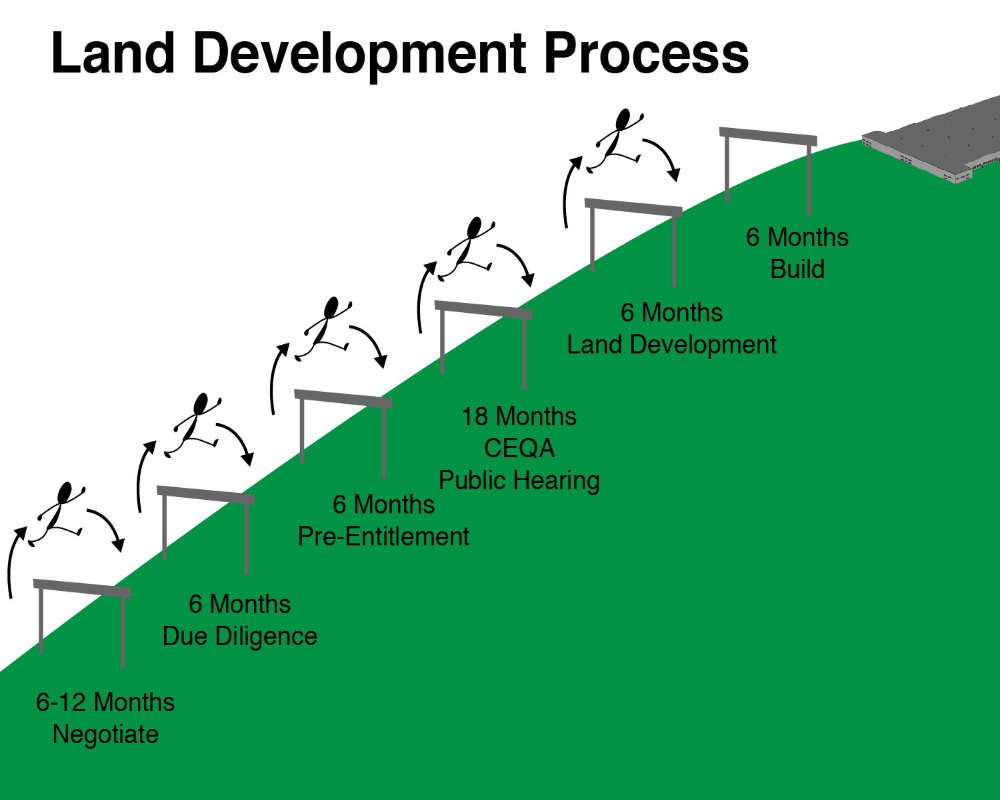Introduction
The development of commercial land is a complex and multi-phased process that transforms raw or underutilized land into income-producing assets such as office buildings, shopping centers, industrial parks, or mixed-use developments. Each stage of the development timeline requires strategic planning, regulatory compliance, financial management, and stakeholder coordination. Understanding the distinct stages of this timeline is essential for developers, investors, planners, and public officials involved in guiding projects from conception to completion. While timelines vary based on project scale, location, and market conditions, the typical commercial development process follows a sequence of structured stages.
1. Site Selection and Preliminary Feasibility
The first stage in commercial land development begins with identifying a suitable site and conducting a preliminary feasibility study. This involves assessing location advantages, market demand, access to infrastructure, environmental conditions, and proximity to target demographics or business districts. Developers also examine zoning classifications, land ownership status, and basic financial viability. At this stage, the goal is to determine whether the site is worth pursuing and whether it aligns with the envisioned development goals. Initial due diligence such as title checks, topographic surveys, and soil testing may be undertaken to uncover early risks or opportunities.
2. Land Acquisition and Legal Due Diligence
Once a site is deemed viable, the developer proceeds to land acquisition, which includes negotiating the purchase, securing financing (if needed), and finalizing legal agreements. This phase also includes comprehensive legal due diligence—confirming land titles, checking for liens, reviewing easements, and ensuring that the property is free from encumbrances or disputes. In many cases, developers secure the land through an option agreement or contingent purchase contract to allow time for further investigations before full commitment.
3. Entitlements and Zoning Approvals
Before any development can begin, the developer must secure entitlements—governmental approvals that grant the legal right to develop the land for the intended use. This includes zoning confirmation or rezoning (if required), special use permits, site plan approvals, variances, and environmental clearances. This stage involves working with local planning boards, attending public hearings, and often coordinating with neighborhood stakeholders. It is one of the most time-consuming and critical stages, as approval outcomes directly shape the project’s scope and feasibility. Delays or opposition at this stage can significantly affect the project timeline.
4. Design and Engineering
Once entitlements are secured, the developer initiates the design phase, engaging architects, civil engineers, and landscape designers to create conceptual and detailed site plans. These plans cover building layout, parking, utilities, landscaping, accessibility, and sustainability features. Engineering studies address structural, electrical, plumbing, and stormwater systems to ensure technical feasibility and code compliance. Design development often occurs in parallel with construction planning and budgeting, leading to the production of construction documents necessary for permitting and bidding.
5. Permitting and Pre-Construction
During this phase, the developer applies for and obtains building permits and construction approvals from relevant regulatory bodies. This includes compliance with building codes, fire safety, environmental protection, and ADA (Americans with Disabilities Act) standards. Developers may also need utility connection permits and transportation impact assessments. Simultaneously, pre-construction activities such as site clearing, grading, environmental remediation, and infrastructure setup (roads, sewer, water) begin to prepare the land for vertical development.
6. Financing and Construction Start
Prior to breaking ground, developers secure final project financing—a mix of equity, construction loans, and possibly government incentives or tax credits. Once funding is in place and permits are approved, construction begins. This phase involves site work, foundation laying, building erection, systems installation, and interior fit-out. Construction timelines vary widely depending on the project’s size and complexity, but commercial projects typically take 12 to 36 months from groundbreaking to completion.
7. Marketing, Leasing, and Pre-Sales
As construction progresses, marketing and leasing efforts are initiated to attract tenants or buyers. Real estate brokers, digital campaigns, and leasing agents work to secure pre-leases for office, retail, or industrial space. Pre-leasing helps validate market demand and is often required by lenders as a condition for construction loan disbursement. In some cases, spaces may be sold as strata units or commercial condominiums.
8. Completion, Inspection, and Occupancy
Upon completion, the development undergoes final inspections to verify building code compliance, safety standards, and permit fulfillment. Once all approvals are obtained, a certificate of occupancy is issued, allowing the building to be legally used. Tenants begin their move-in process, and operations commence.
9. Post-Completion Management or Disposition
The final stage involves either property management or asset disposition. If the project is a long-term investment, the developer or an appointed property management firm takes over maintenance, leasing, and day-to-day operations. If the project was built for sale, units may be sold individually or the entire property may be sold to investors. Performance tracking, tenant satisfaction, and long-term value management are key components of post-completion strategy.
Conclusion
The development timeline for commercial land is a carefully orchestrated sequence of stages, each building on the success of the last. From early site selection and feasibility to final occupancy and management, every phase requires detailed planning, compliance with regulatory frameworks, financial oversight, and collaboration among stakeholders. Understanding this timeline is critical to managing risk, setting realistic expectations, and ensuring that commercial development projects are both economically viable and strategically aligned with market and community needs. Through careful execution of each stage, developers can bring transformative projects to life and contribute meaningfully to the growth and vitality of urban and suburban environments.
Hashtags
#CommercialLandDevelopment #LandDevelopmentStages #RealEstateDevelopment #PropertyDevelopment #SitePlanning #ZoningApproval #LandAcquisition #DevelopmentTimeline #ConstructionPlanning #UrbanPlanning #RealEstateInvesting #CommercialRealEstate #ProjectManagement #InfrastructureDevelopment #LandUsePlanning #DevelopmentProcess #BuildingPermits #MarketAnalysis #InvestmentStrategy #SustainableDevelopment


